Want to know how to make a cornhusk doll? you are in the right place! Sage, your host of Colonial Crafts takes her web series on the road! Join her at Riley’s Farm in Oak Glen California where she and the staff will take you step be step to make dolls the way Native American and Colonist kids did in the 1700’s.
SEE THE ENTIRE COLONIAL CRAFT SERIES HERE
Corn Husk Dolls of the Eighteenth Century
Cornhusk dolls are not surprisingly indigenous to the people who grew corn. Native American peoples of what is now North East America began in the art of corn agriculture about a thousand years ago. By the time the colonists arrived, cornhusk dolls had been around for a long time. Since they are very simple to make, colonial boys and girls learned very quickly and the eighteenth century version of Barbie went viral.
More Than Just a Toy
As with most things in Native cultures, there is an element of sacred to the cornhusk doll. Sometimes they were used in healing ceremonies and sometimes buried in the earth to take bad feelings or dreams away.
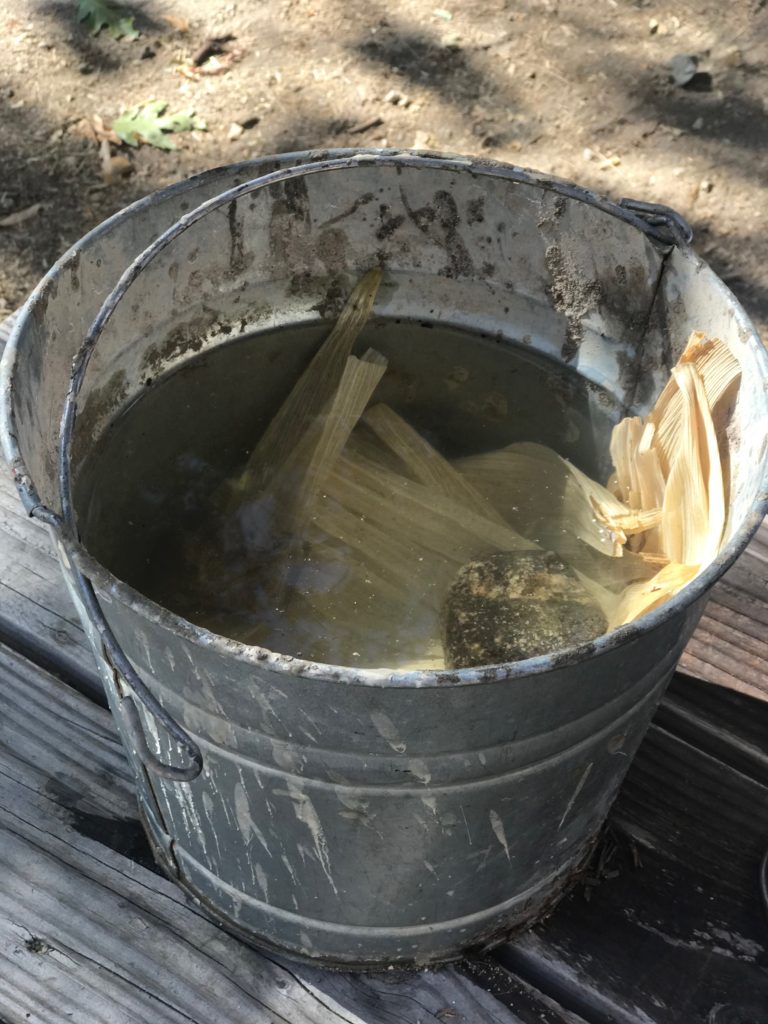
From this 
to this!
Waste Not Want Not
Cornhusk dolls were as varied as the children who made them. The husks we would consider rubbish today and either toss out or put in the compost bin. But kids then took the husks and turned them into playthings. The corn silk was sometimes used as hair for the doll and sometimes great detail went into making the doll. For our purposes today we are using sticks as arms but sometimes additional husks were braided and formed as arms.
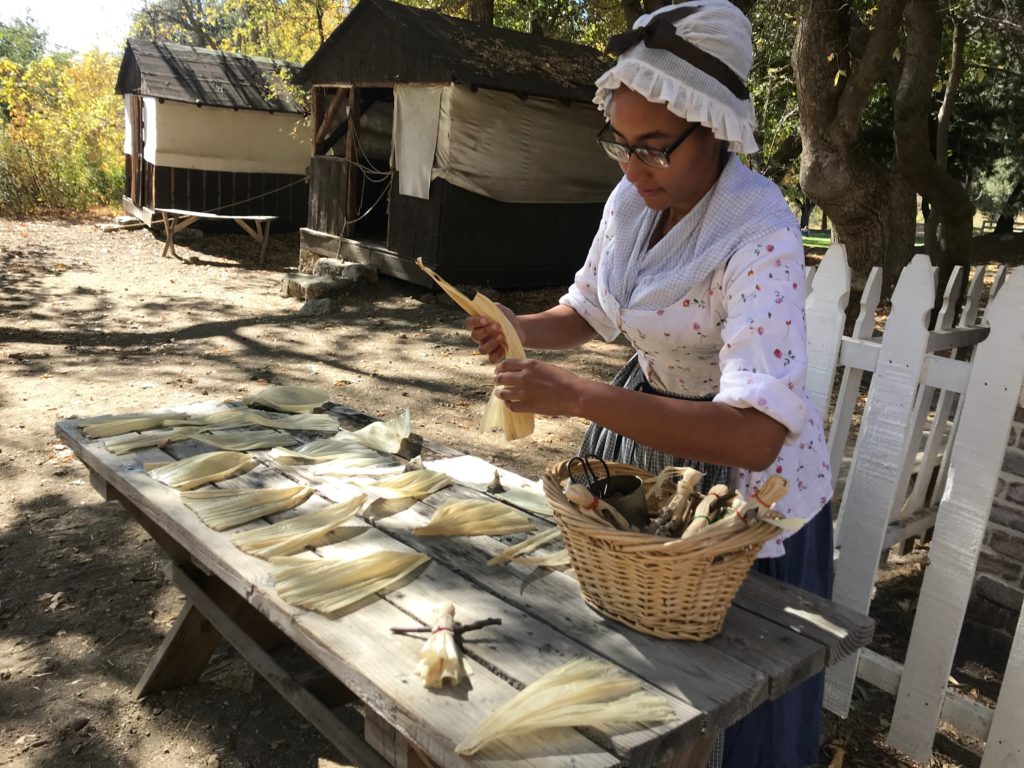
Toys Do Not Last
The general thought of a cornhusk doll is this. They are not meant to last forever. There was not sadness as the cornhusk doll would disintegrate as the child was growing older. The child had moved on and grown older and the doll had served its purpose.
Dolls as Connection
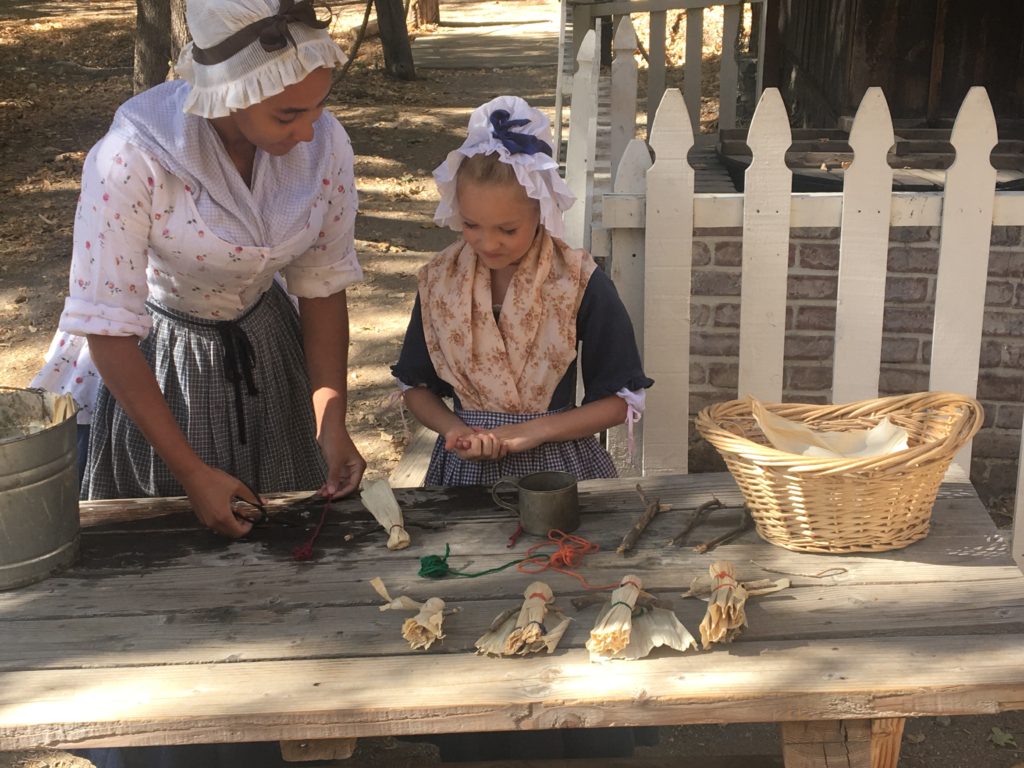
Making a toy together is something that requires communication, but it doesn’t mean language has to be shared. Making dolls together was a way for Native and Colonial children to connect and learn together.
Colonial Craft Supplies
All the supplies for this Colonial Craft are super affordable and on the Colonial Craft Supplies List at Sage’s Colonial Craft Shoppe. You’ll need scissors, cornhusks, yarn, sticks, and a pail (or bowl) of water. That’s it!
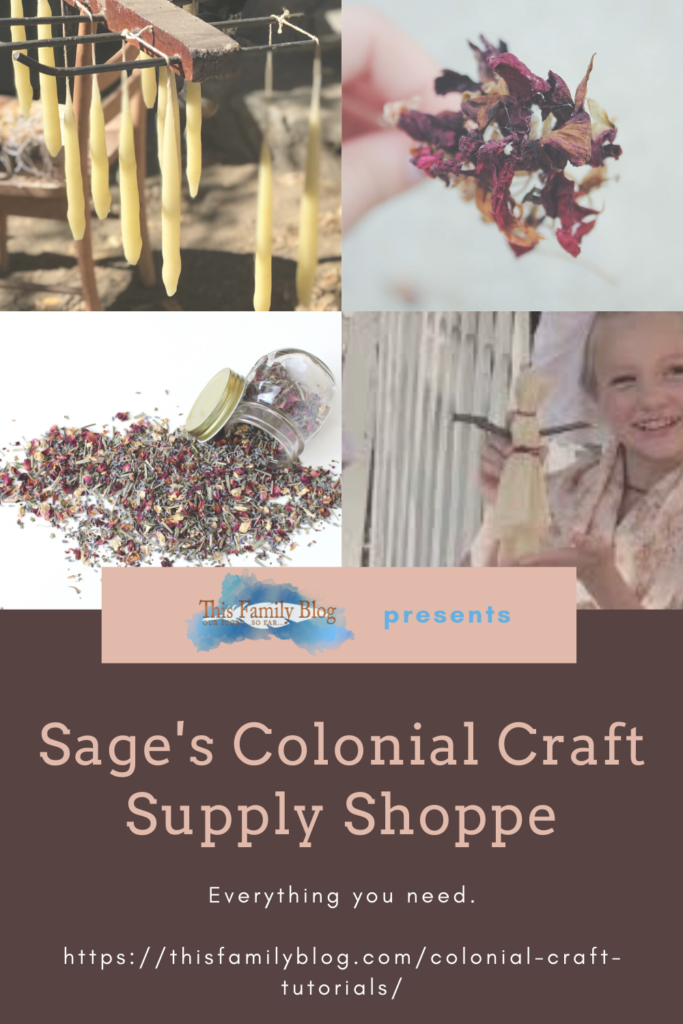
VISIT SAGE’S COLONIAL CRAFT SUPPLY SHOPPE
Make a Cornhusk Doll
As will most things of the 1600 and 1700s the method was low tech but the results are surprisingly pretty and durable. Sage took her Colonial Crafts on the road and visited Riley’s Farm in Oak Glen California to get a lesson in how they make their cornhusk dolls there.
Video Step by Step
VISIT SAGE’S COLONIAL CRAFT SUPPLY SHOPPE HERE
Embellishments
In the video the girls talked about adding little personal embellishments like angel wings or maybe a cape. Those are pretty modern thoughts on embellishments but they DID add things way back then…for a very good reason.
Sometimes bits of scrap buckskin or cloth became clothing for the dolls. Sometimes kids got really fancy and made little accouterments for the doll like tiny little cradle boards, sewing kits, bows and arrows, etc.
The thing is producing these tiny little items helped prepare the kids for what they would need in their own lives as they got older. Sure they were making toys for themselves but they were also learning valuable skills that they would use when it came time to make their own life size versions.
Much like American Girl dolls today except that the kids made all the accessories themselves and this was an activity for both boys and girls.
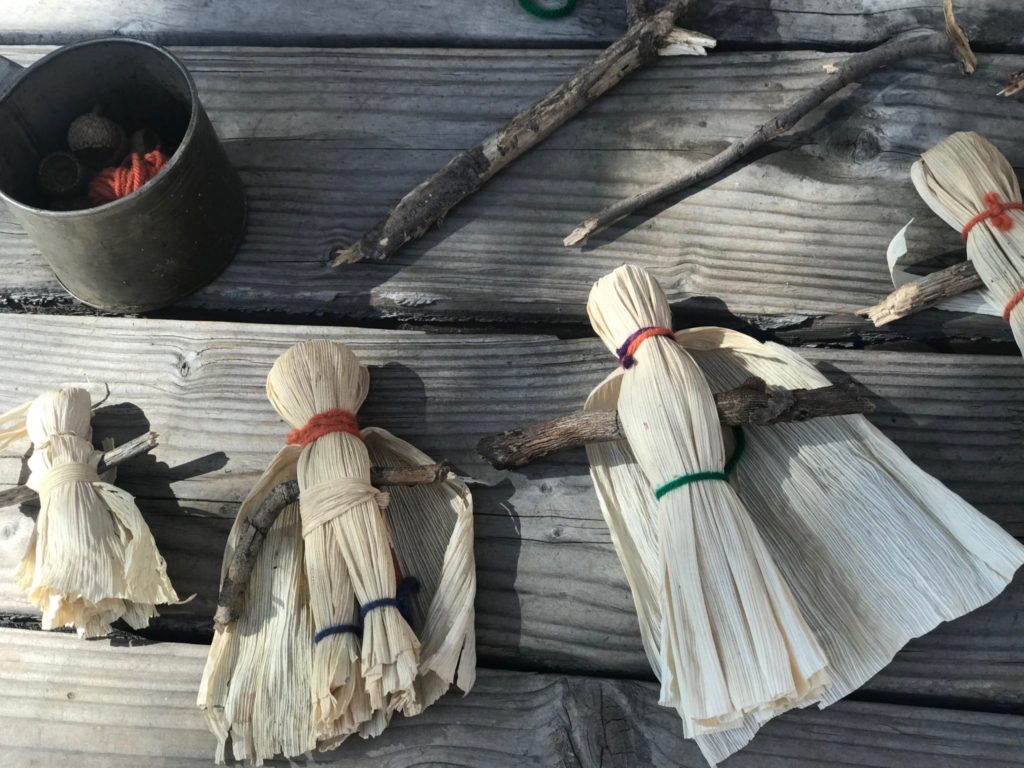
Legend of the Cornhusk Doll
As in most oral traditions, there are many versions of this legend but the gist of it and the lesson are usually the same. In this version, Corn, one of the Three Sisters, made little cornhusk doll people to play and give smiles to the Iroquois tribe.
Great Spirit was pleased and allowed the cornhusk people to travel to the villages of the poeple. On their travels, one of the cornhusk dolls stopped and saw her reflection in a pool. She became so entranced with her looks she became quite vain and thought herself too beautiful to play with the people. She became very naughty and made the people unhappy…the very opposite of what she was created to do.
Great Spirit was unimpressed and the result was her face was erased. To this day cornhusk dolls do not have faces so they can serve their purpose to play and bring joy.
For generations versions of this story have been passed down as children learn to make dolls from their elders. The valuable lesson is that even though Creator has given each person a gift and a purpose, it is wrong to think that makes one better than others. Every time the child played with that doll, the lesson is echoed.
A Special Thank You
A very special thank you to the good people at Riley’s Farm who sponsored this episode of Colonial Crafts. Riley’s Farm is a unique and special place in Oak Glen California. They make history come alive in extraordinary ways and specialize in the 1700’s-1800’s.
READ ABOUT DINNER THEATER AT RILEY’S FARM
More Colonial Crafts Please
Did you love learning How to Make a Cornhusk Doll? We sure hope so!! See all our Colonial Crafting Videos Here. And hey, you should know… this is all Sage’s idea. Dad and I just make it happen for her…and you!
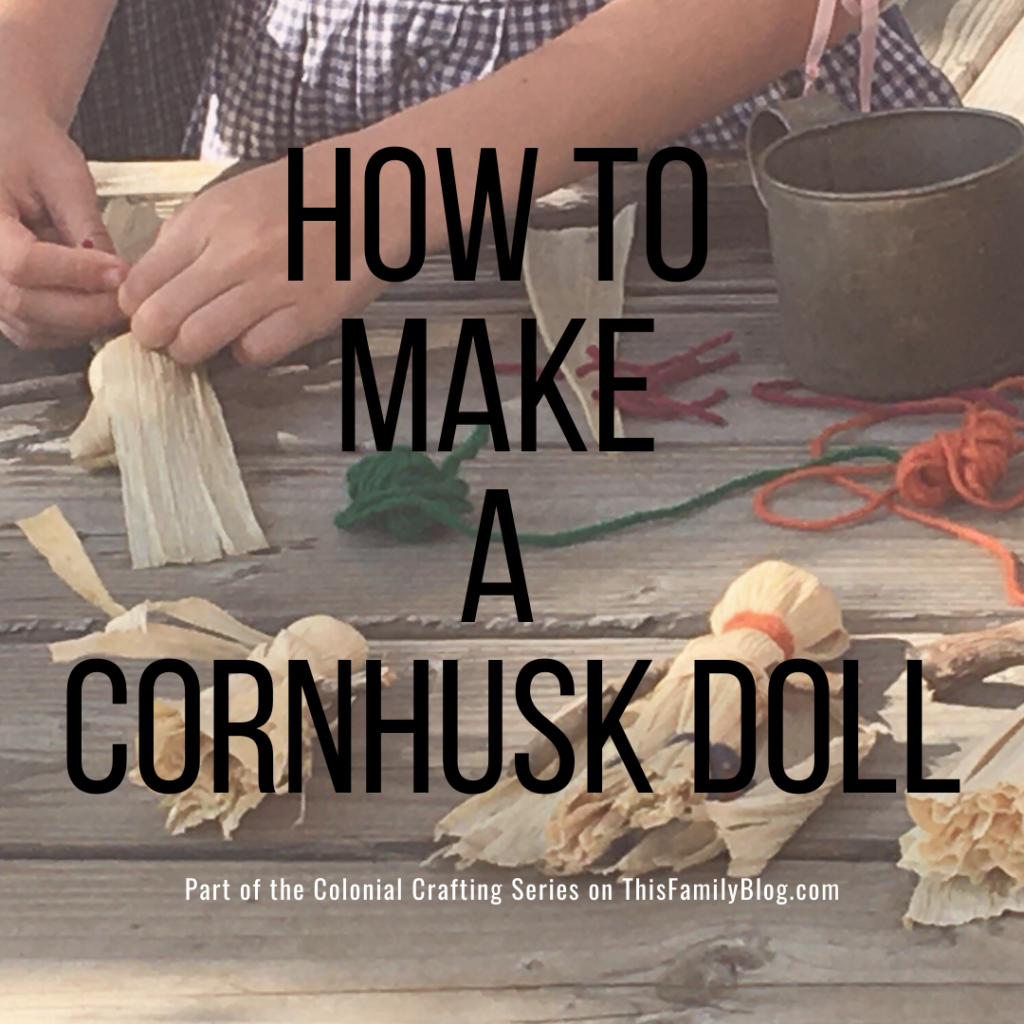
Want to get emails that let you know when we post the latest craft video? And other Historical and hysterical things? Sign up below. Don’t worry, we don’t spam. Just emails from us with useful and fun things like this!
Pin It For Later!

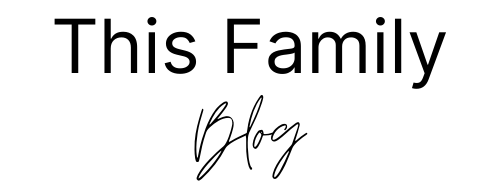
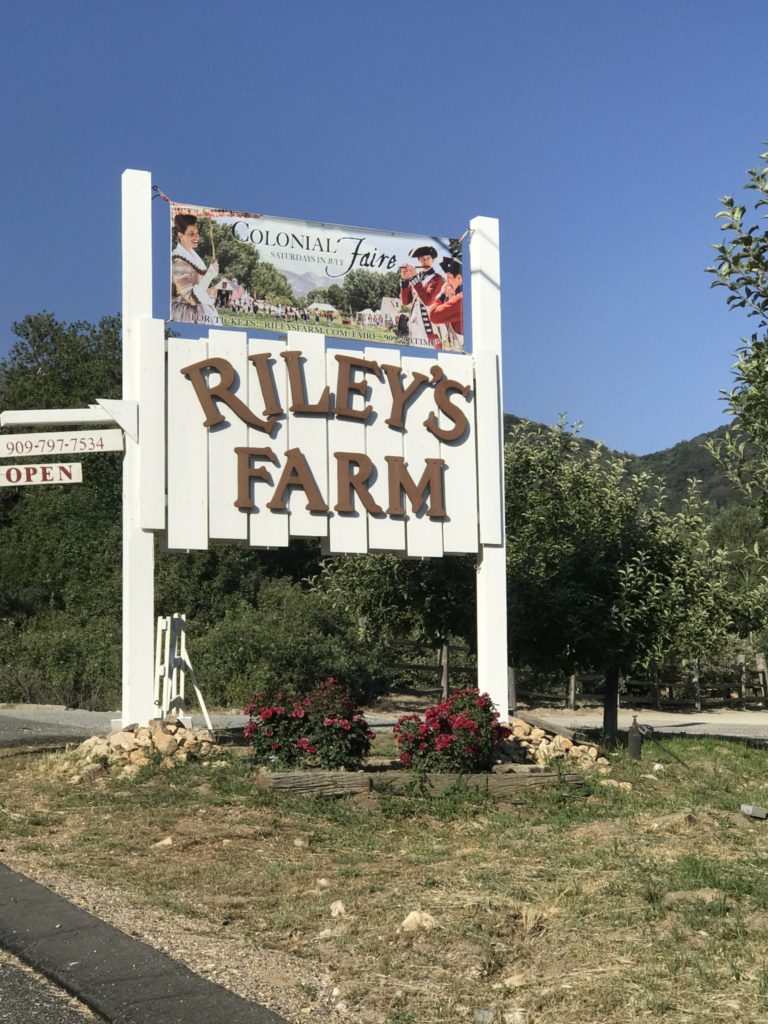

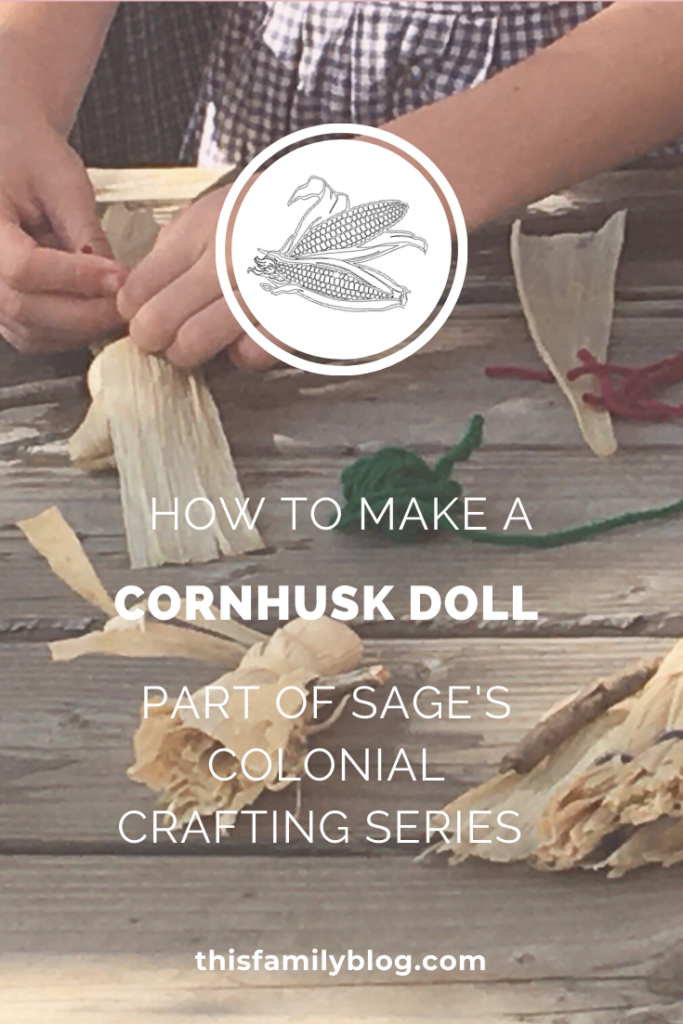

We homeschool and I am so adding this to our list! My girls would love it! Thank you for sharing!
FANTASTIC! Be sure to look at the whole series, about half are currently up but there will be 12 or 13 up in total 🙂
Those are super cute.
Thank you! Fun to make too!!
I enjoyed the legend of the Cornhusk doll. It would be a fun arts and crafts event to create one.
Interesting story behind the cornhusk doll. My girls love learning about history and different cultures. Thanks for including how to make the doll!
Interesting, I would have never thunk it, but makes so much sense. I like the reuse & preservation factor.
These look like fun to make! I love the story about why they don’t have faces!
What a great hands on learning experience!
A fun family craft with a history less too. This would have been great when my kids were small. Thanks for sharing the details.
Our local living history museum had these set out for the kids to make whenever we visited. I always made one to take home. I love that they have a doll without a skirt and one with.
So fun. I have always wanted my girls to do this at Greenfield Village in Michigan.
I remember making these when I was a kid. I believe my mom had a bunch and I would play with them. So cool!
Quite interesting the legend of the cornhusk doll. Now it makes sense why they don’t have faces.
This looks like a fun activity to do with the kids
This looks like a fun activity to do with the kids!
Great idea for a craft to learn!
What a unique post! Thanks for sharing the steps with us!
So fun! I can remember making these when I was a child at a local living history museum. Such a cool experience.
So glad you shared this piece of history. I think it’s important to show our children these things and have them participate.
I love this! You make history come alive which is so important! I have made these dolls with my girls.. they are so much fun! I am going to make the butter with them!
Ohhh my gosh!!! Cornhusk dolls!! I remember playing with these as a child! I’m from Kansas and playing pioneer girl filled my imaginary adventures! ha! Your daughter does such an amazing job in the video taking us through your little trip and craft! Great video and post! I really enjoyed it!
Aren’t they a hoot!??!! I’m so glad you enjoyed the post! I hope you will check out the other Colonial Craft videos as well!
Kids tend to value their creations more than things that are given to them. This is a great way to empower them with a new skill AND give them something that they will cherish and be proud of…so much better than a random store-bought toy!
Boy isn’t that the truth? I love the idea of hidden learning in play. Riley’s does a rathe spectacular job of that. Hopefully we do too…:)
What a great tutorial and connection to history. I love that you are helping your daughter interact with history through crafting.
I love that you took the time to read and watch! Glad you enjoyed it!
Making these when I was younger was so fun. We are going to share this with my daughter who loves making new things. Thank you for sharing.
Excellent! I’m sure she will love it!
I remember making these as a child. They were so much fun. I might have to try and see if I can convince my niece to make these dolls.
Do it!!! The old fashioned things are not only fun but it is a great memory maker. 🙂
This is fun and a great craft to learn about history too.
Yes! All of the above!
Thank you for watching